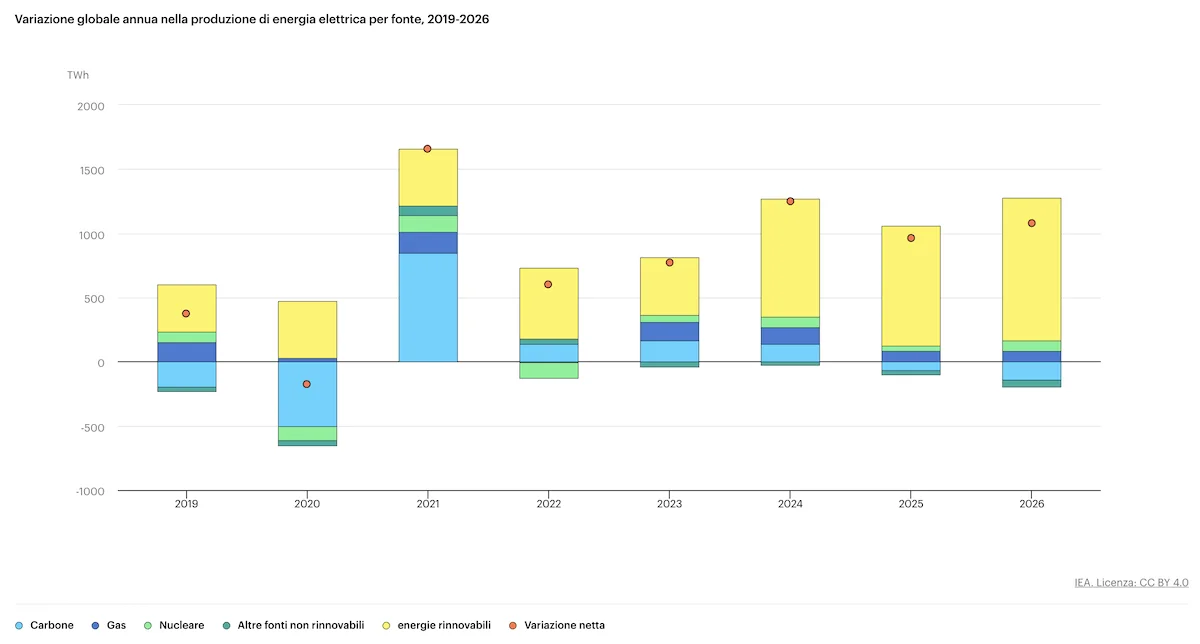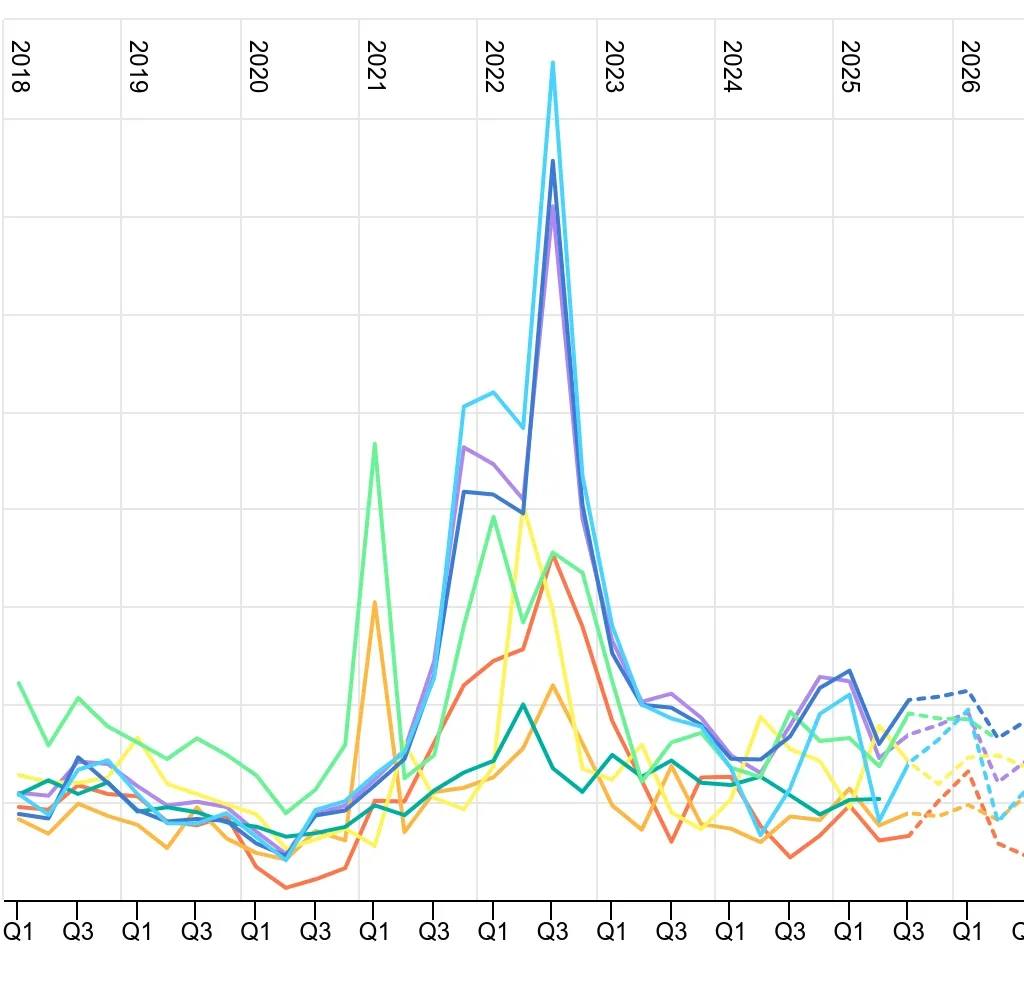
Global electricity demand rising fast through 2026
The latest Electricity Mid-Year Update from the International Energy Agency (IEA) confirms it: global electricity demand will keep climbing over the next two years at nearly double the pace of the last decade. While it won’t surpass the peaks of 2024, the new growth will be significant, and nearly all of it will be covered by wind and solar power.
The IEA’s report tracks developments across key economies including China, the European Union, India, and the United States. It also provides updated data on electricity-related emissions and wholesale prices worldwide.
Let’s take a closer look at what’s ahead.
Electricity demand outlook for 2025–2026
According to the IEA, global electricity demand is projected to rise by 3.3% in 2025 and by 3.7% in 2026, despite slower overall economic activity. In absolute terms, electricity consumption is expected to grow from 30,856 TWh in 2024 to nearly 32,000 TWh in 2025, then add another 1,100 TWh the following year.
This surge is being fueled by both traditional and emerging consumption drivers. One major factor is residential cooling. The growing use of air conditioning, driven by rising global temperatures, is significantly increasing power use, even though such systems remain inaccessible for many populations. Industrial demand, data center expansion, and ongoing electrification across sectors are also key contributors.
The good news is that over 90% of the additional global electricity demand during this period is expected to be met by renewable sources. Wind and solar power, which together are forecast to exceed 4,000 TWh in 2024, will grow to over 5,000 TWh in 2025 and surpass 6,000 TWh in 2026.
What’s more, the IEA predicts that electricity generation from renewables will overtake coal for the first time. “Depending on weather conditions and economic developments, renewable electricity output is expected to surpass coal as early as 2025, or by 2026 at the latest,” the agency writes. “Once this shift occurs, coal’s share of total electricity generation will fall below 33%, for the first time in a century.”
That said, other technologies will also expand. Global electricity generation from natural gas is projected to grow by 1.3%, and nuclear generation by 2% over the 2025–2026 period.

Emissions impacts of global electricity demand
How will this surge in electricity demand affect the climate? According to the IEA, global carbon dioxide emissions from power generation may reach a plateau this year, followed by a modest decline in 2026.
“The rapid deployment of renewable energy is limiting fossil fuel-based electricity growth,” the report notes. “However, extreme weather events, including heatwaves, cold spells, or below-average rainfall that impacts hydropower, can lead to year-to-year fluctuations in emissions. Developments in China, where more than half of the world’s coal-fired electricity is produced, will have a major influence on global trends.”
Electricity prices in 2025
Wholesale electricity prices are another critical factor in the global outlook. In the first half of 2025, prices increased year-over-year in several markets. In the European Union and the United States, wholesale electricity prices rose by roughly 30–40%.
Across the EU, prices averaged around $90/MWh for the first six months of the year. This was driven by a 20% increase in natural gas prices and a rise in carbon allowance costs to approximately €70 per metric ton of CO₂. Reduced electricity output from wind and hydropower also played a role.
At the same time, negative prices are becoming more frequent in many European markets. The share of hours with negative wholesale electricity prices reached 8–9% in countries such as Germany, the Netherlands, and Spain, up from 4–5% in 2024.
Elsewhere, wholesale electricity prices declined. In countries like India and Australia, average prices fell by 5–15% in 2025 compared to the previous year.

https://www.iea.org/data-and-statistics/charts/quarterly-average-wholesale-electricity-prices-for-selected-regions-2018-2026
The IEA estimates that the average electricity price in the EU for 2025 will be nearly double that of the United States, and about 50% higher than in China. Futures prices for 2026 in the EU currently average $80/MWh, suggesting a 15% drop from 2025 levels.